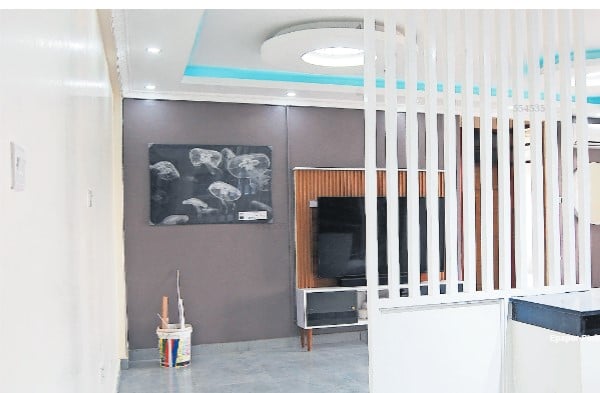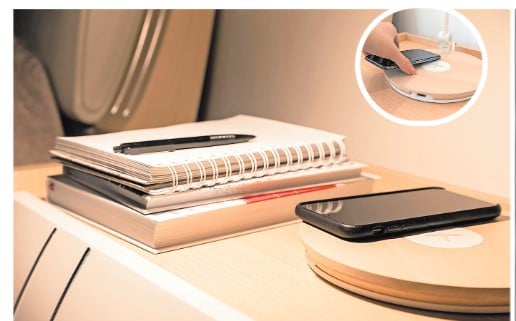Prime
What to know before choosing bricks, blocks

Concrete blocks from a credible manufacturer are normally stronger and can carry greater weight than locally baked clay bricks. Photo by Rachel Mabala
Recently, as I walked near home, I came across a storeyed building whose ground floor was built using clay bricks. On looking closely, I also observed that the first floor of the same building was built using hollow cement blocks while the second floor was under construction using partitioning blocks. I left wondering if the use of different bricks and blocks at different floors would not have an impact on the building in future.
Building load
Joseph Oryang, an engineer, explains that the type ,of bricks or blocks you use to construct your storeyed building depends a lot on its structural design and the load it was designed to carry. In most cases, where you are not sure of the strength of the building, is where light materials such as partitioning blocks come in especially at the top.
Pipes and wires
According to Oryang, building involves a number of processes. After putting up the walls, at one point, you will need to dig into the wall to create pathways for electrical wires or pipes. If you used the partitioning blocks, it is easier because they have holes that are easy to cover after installing pipes or wires. This is much easier compared to when you are creating wire or pipe pathways in the brick or block body.
Weight, durability
However, the partitioning blocks are more easily damaged than clay bricks and cement blocks.
“The disadvantage with partitioning blocks is that you cannot suspend a heavy load on them. For instance, you might want to erect a water tank but find a problem with partitioning block walls because they are thin. They are easily compromised. If you are going to suspend heavy things on partitioning blocks, you will feel more comfortable using clay bricks or cement or concrete blocks,” Oryang.
Daniel Kyeyune, a builder, notes that while you may build cement blocks on top of clay bricks, you cannot suspend clay bricks or cement blocks on top of partitioning blocks because they are light and cannot withstand the weight of clay bricks or cement blocks.
Hollow cement blocks vis-à-vis clay bricks
Unlike clay bricks that are small in size, Oryang says hollow cement or concrete blocks are better because they not only give you room to save on construction costs, but lessen the weight or load of the entire building. They (cement blocks) are equally strong weight bearers as clay bricks. When it comes to bearing the load, for instance the ability of the wall to carry the weight of the ring beam and the slab, you may prefer cement blocks or clay bricks. This is a case where the wall is not only carrying itself but also the load of the slab and ring beam. For such structures, Oryang says it is advisable to use solid clay bricks or concrete blocks.
“If you get good quality concrete blocks from a credible manufacturer, they are normally stronger and the load they can carry is greater than that of locally baked clay bricks. If you are going to use bricks for a load bearing structure, you need to look for the best made from pure clay but not the ones made from pure ordinary red soil. Those made from red soil are not strong and will not carry much of a load. You will find that the concrete cement blocks are a much better alternative than bricks made from red soil,” Oryang advises.
Advantages of cement blocks
Kyeyune agrees with Oryang, reasoning that cement blocks give you a number of advantages over clay bricks. When laid very well, you can build using cement blocks and decide not to plaster and just paint, thereby saving money you would have spent on plastering.
Clay bricks, on the other hand, are sometimes not even or uniform in shape, especially those locally made. Sometimes when your builder aligns them in sync on the outside, you will find that they are not of the same line when you view them from inside, meaning you will have to plaster.
“If you do not plaster locally made clay bricks, the wall will not appear smooth. You will also have to make the plaster thicker. But if you get concrete blocks from one manufacturer, they are normally uniform. When you get one side smooth, the other automatically becomes smooth as well, a result you cannot get with clay bricks,” Oryang says.
Also, cement blocks do not only allow you save money on finishing if you choose not to plaster but they also save time and labour costs in construction compared to clay bricks. This is because they are big and occupy big spaces. They allow you to use less of sand and cement.
However, Oryang observes that when you calculate the total cost, you may find that they are almost the same as someone who opted for clay bricks. This is because clay bricks are way cheaper, with a piece costing between Shs300 to Shs500, than cement blocks that cost between Shs2,000 to Shs2,500 a piece. With clay bricks, you have to be ready to spend a lot more on cement and sand compared to cement blocks.

Exhibitors display hollow blocks and pavers at the Fabulous Homes Festival last year. Photo by Rachel Mabala
Advantages of clay bricks
One of the advantages clay bricks have over cement blocks is that they are the best when it comes to laying of the foundation. The underground water in many cases has certain chemicals which affect concrete blocks.
“Burnt clay bricks do not react or get affected by anything because they can withstand any chemical corrosion or water effect compared to cement or concrete blocks. When you use concrete blocks at the foundation, if a crack comes up, say due to the way the ground settled, it easily moves up through cement blocks. With clay bricks, they are more flexible and the cracks do not go through them easily,” Oryang adds.
Mixing of bricks and blocks
When you mix blocks and bricks on the same site, it means you are not sure of the design of the building or you have been told that the building was not designed to use clay bricks. That is why you will find buildings where, for instance the first floor was built using hollow cement blocks and the foundation with clay bricks and the second floor or other floors with partitioning blocks.
Oryang explains further that mixing of blocks and bricks could also because the building was not designed to have an extra slab or floor but that was added on as an afterthought and meant to be just a roof slab, and you decided to add another floor, which is more load. In this situation, you have to keep it as light as possible, where partitioning blocks come into play.
Uniform bricks and blocks
There are also scenarios where you may use uniform bricks from the foundation to the top floor.
In such an arrangement, Oryang argues that the building must have been designed to carry the load. As long as it is a storeyed building, everything should be done well for purposes of longevity and safety.
Cost
A good hollow cement block of 200x200x400mm costs between Shs2,000 to Shs2,500 while partitioned blocks cost almost the same amount, depending on the size and where you buy them from.
They (partitioning blocks) are light and can be built much faster than concrete blocks and meant to be used on top most floors, with nothing suspended on them.
Bricks,blocks and iron bar usage
According to Daniel Kyeyune, a builder, iron bars you use depend on the load the building is designed to carry. If it is a structural design, your engineer will have to specify the iron bar sizes, for example, the 16mm high tensile bars that are supposed to have certain strength characteristics.
“Some site engineers use standard iron bar sizes to design the structure of the building. If the iron bars do not meet the standards, it is dangerous. If things go wrong and the building collapses, the engineer can be accused of manslaughter. To maintain professional ethics, you sometimes have to stand up to the owner of the building,” Kyeyune advises.
Cheap could cost you
Oryang interjects, reasoning that very often, the problem may not be the site engineer. It is sometimes you the site owner who wants to save costs and buy cheaper iron bars and the engineer accepts them without having them tested and the engineer fails to realise there is a problem.
Deal with professionals
“Deal with professionals during construction. Many of the people they call site engineers do not have the required qualifications or learnt on the job. Any building is supposed to be constructed as per the design. But in the process of construction, sometimes the design changes but must be done professionally. If it involves the structure, the structural engineer needs to revisit and look at the affected changes,” Oryang advises.
Genuine iron bars
One of the things to consider is buying iron bars from genuine manufacturers because these companies have a reputation to protect. This means they will never sell sub-standard materials because they are aware of the consequences.
One of the ways you will know substandard iron bars is that they will break easily when you try to bend them. It is advisable to have your iron bars tested first before you use them on your site even if you are putting up a small project. Do not think testing iron bars is too much of a bother. There are quite a number of material testing laboratories such as Tech Lab in Nalukolongo, Ministry of Works laboratory in Kireka, among others. These, Joseph Oryang, an engineer, says, charge approximately Shs10,000 per test to test the strength of the steel bar, the carbon content and the size, among other factors.




